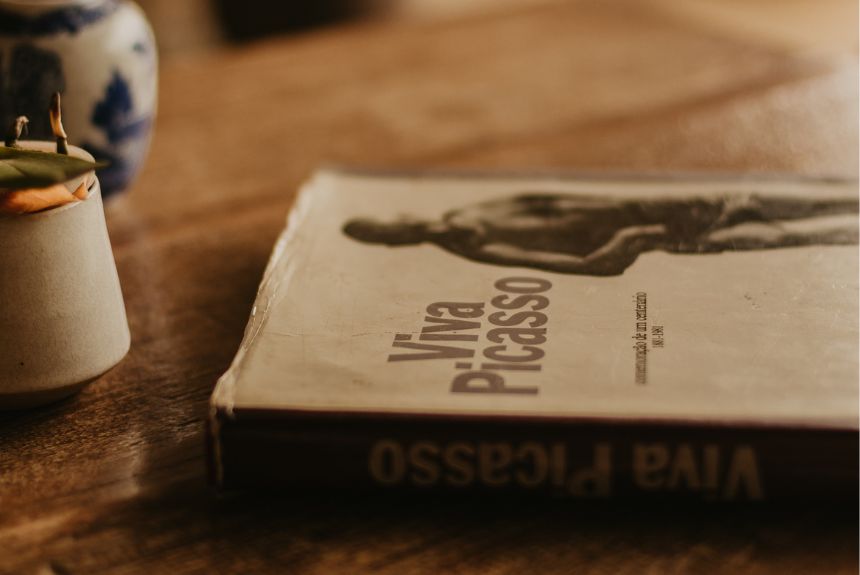Picasso's name is synonymous with innovation and artistic brilliance. His contributions to modern art have left an indelible mark on the art world. In this comprehensive article, we will dive deep into the genius of Picasso's modern art, exploring the key elements, themes, and techniques that shaped his groundbreaking works. We will unravel the intricacies of his artistic journey, analyzing the significance and impact of his paintings on art history.
So, let's embark on a captivating journey through the mind of one of the greatest artists of all time, Unraveling Picasso's Modern Art's Genius.
Unraveling Picasso's Modern Art's Genius
Picasso's creative prowess is evident in his body of work, which spans various periods and styles. His art defies convention and pushes boundaries, leaving art enthusiasts and scholars awe-inspired. To truly understand the genius behind his masterpieces, we must explore the following aspects:
The Early Life and Influences of Picasso
Pablo Picasso was born on October 25, 1881, in the southern Spanish city of Malaga. His father, an art teacher, recognized his talent early on and provided him with formal art training. Picasso's early exposure to art greatly influenced his creative development. By the age of seven, he was already skilled enough to create intricate drawings with exceptional realism. As he grew older, he drew inspiration from classical artists like Velázquez and Goya, as well as from contemporary art movements.
The Blue Period: A Journey into Melancholy
The Blue Period, which lasted from 1901 to 1904, is characterized by its somber and melancholic tone. During this phase, Picasso's works predominantly featured shades of blue, portraying themes of poverty, loneliness, and despair. This period was deeply influenced by personal struggles and the suicide of a close friend. Notable works from this era include "La Vie" and "The Old Guitarist," both of which showcase the artist's profound exploration of human suffering and vulnerability.
The Rose Period: A Splash of Color and Joy
Following the Blue Period, Picasso transitioned into the Rose Period, which lasted from 1904 to 1906. During this phase, he shifted from using predominantly blue tones to incorporating warmer colors like pinks and oranges. The Rose Period was characterized by a more optimistic and joyful approach, with circus performers and harlequins becoming recurring subjects in his works. Pieces like "Family of Saltimbanques" epitomize the lively and playful nature of this period.
Cubism: Shattering Perspectives
Cubism, co-founded by Picasso and Georges Braque, is one of the most influential art movements of the 20th century. It emerged around 1907 and marked a radical departure from traditional artistic representation. Instead of portraying objects from a single viewpoint, Cubist artists depicted them from multiple angles, breaking down forms into geometric shapes and fragments. "Les Demoiselles d'Avignon," painted in 1907, is considered one of the first Cubist works and exemplifies the movement's revolutionary approach to perspective.
The Influence of African Art
During the early 20th century, European artists were exposed to a vast array of African art and artifacts through colonization and trade. Picasso, too, encountered African masks and sculptures, which had a profound impact on his work. He was drawn to the geometric forms, expressive qualities, and primal power of these objects. African art heavily influenced Picasso's artistic language during his Cubist period, leading to the creation of iconic masterpieces that merged African and European sensibilities.
The Surrealist Connection
Although Picasso was not a formal member of the Surrealist movement, his art exhibited elements of surrealism. Surrealist artists were intrigued by the subconscious mind and explored dream-like imagery in their works. Picasso's paintings from the 1920s often featured distorted and fantastical figures, blurring the lines between reality and imagination. His collaboration with Surrealist artists like Salvador Dalí further fueled his exploration of the subconscious.
The Impact of World War II
World War II had a profound impact on Picasso and the trajectory of his art. In 1937, during the Spanish Civil War, he created one of his most famous and politically charged works, "Guernica." This large-scale mural depicts the bombing of the Basque town of Guernica by German and Italian forces. "Guernica" is a powerful anti-war statement, representing the horrors and suffering caused by conflict and violence.
Picasso's Ceramic Works
In addition to his renowned paintings, Picasso also experimented with ceramics. Starting in the late 1940s, he explored the medium of pottery, collaborating with skilled craftsmen in the South of France. Picasso's ceramic works often displayed his signature playful and imaginative style. These pieces showcase his versatility as an artist and his ability to translate his artistic vision into various forms.
The Later Years: Peace and Renewal
As Picasso entered his later years, his art took on a more peaceful and reflective tone. He continued to paint and draw prolifically, embracing different styles and techniques. Picasso's works from this period often celebrated love, beauty, and the joys of life. His art became more vibrant, with a focus on the human form and the essence of human connection.
Picasso's Legacy in Contemporary Art
Even after his passing in 1973, Picasso's legacy endures as a beacon of creativity and innovation. His artistic innovations continue to shape contemporary art movements, inspiring countless artists across the globe. Picasso's groundbreaking approach to form, perspective, and emotional expression paved the way for future generations to explore new artistic territories.
Conclusion
Pablo Picasso's modern art remains a testament to the boundless potential of human creativity. Through the Blue and Rose Periods, Cubism, and beyond, he fearlessly pushed the boundaries of art, forever changing the course of artistic expression. His art reflects the depths of human emotion, the beauty of life, and the importance of embracing the diverse facets of the human experience. Picasso's genius continues to captivate and challenge us, prompting reflection on the complex nature of art and its profound impact on society. As we unravel Picasso's Modern Art's Genius, we embark on a journey that celebrates the transformative power of artistic vision and the enduring legacy of one of history's greatest artists.

